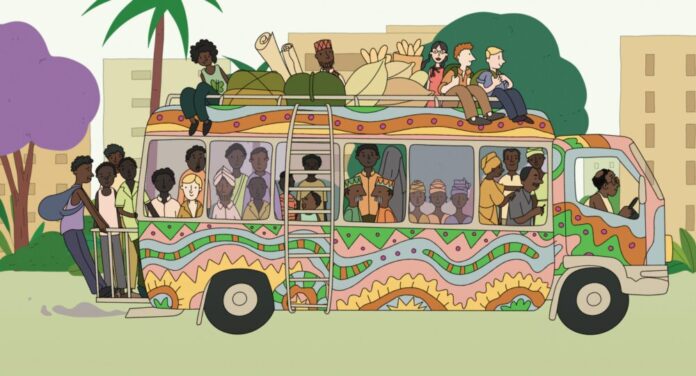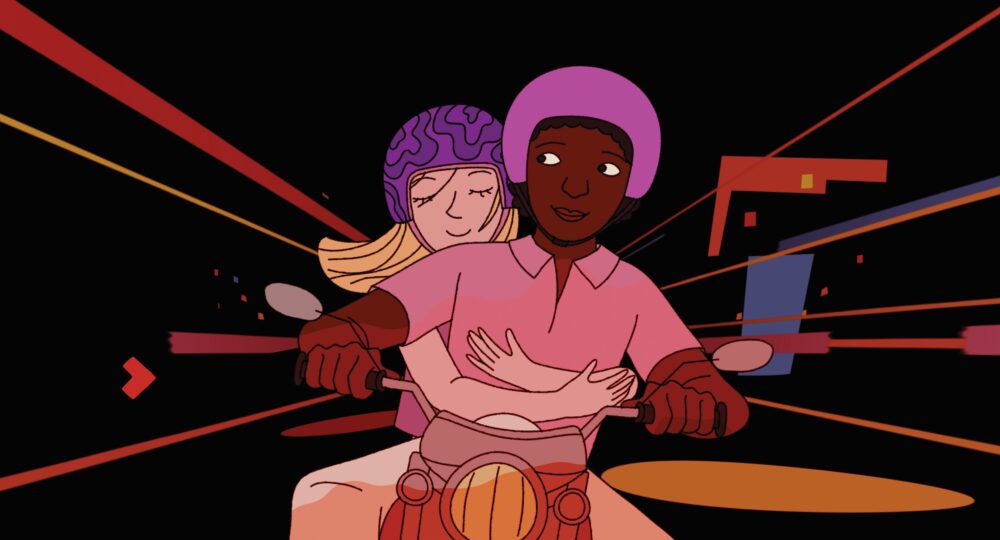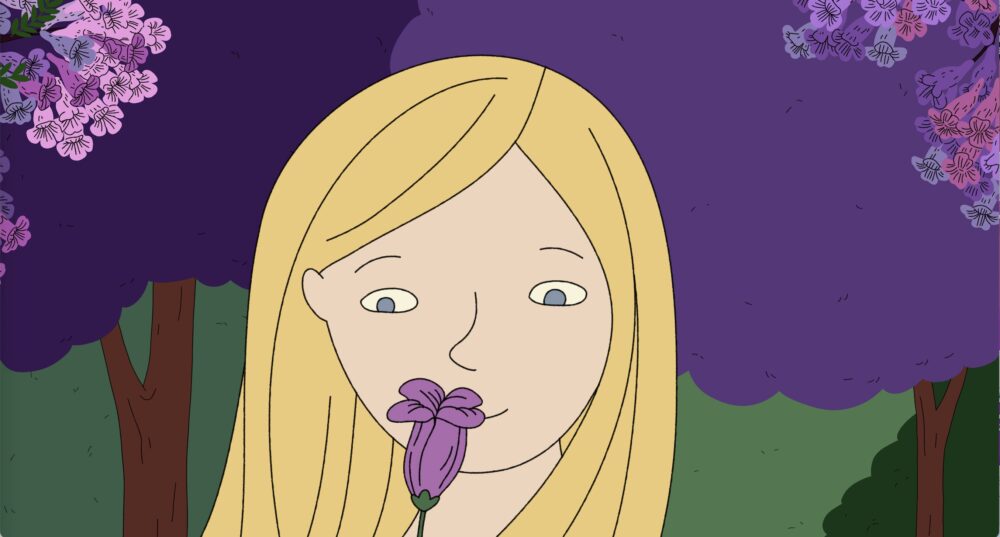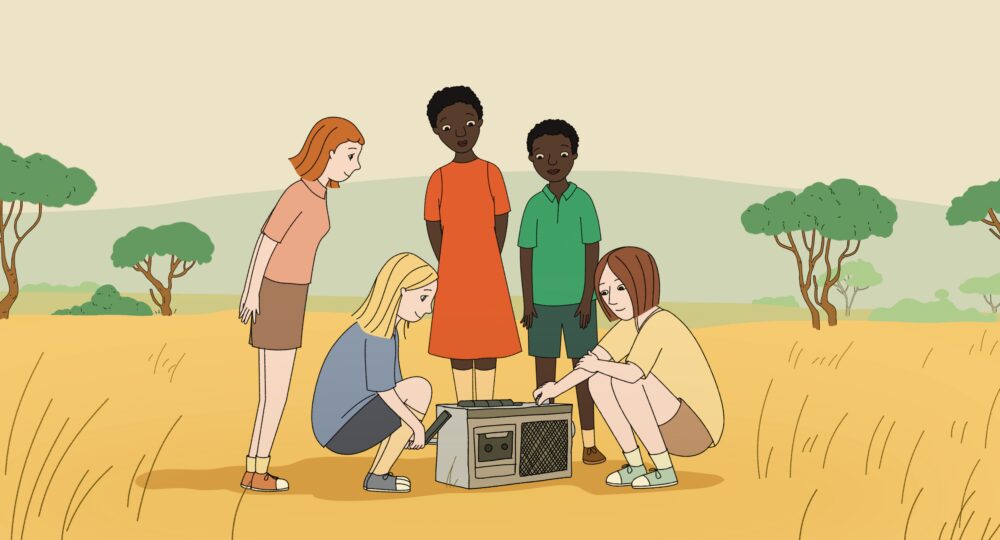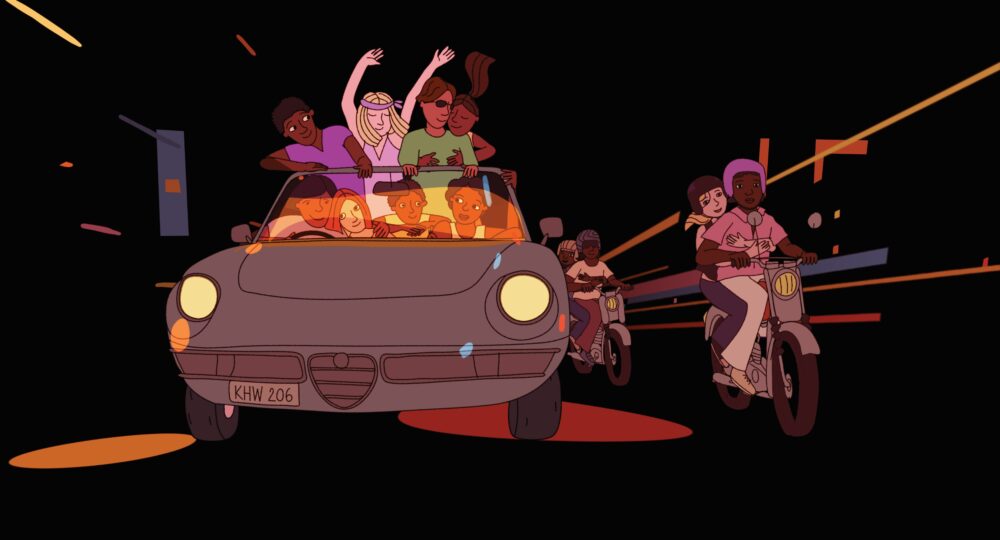|
Getting your Trinity Audio player ready...
|
[adrotate banner=”1124″]
“All happy families are alike; each unhappy family is unhappy in its own way,” Tolstoy famously wrote — a theme Torill Kove’s latest animated short film, Maybe Elephants, playfully explores. Kove, a world-renowned animator with three Oscar nominations and a win for The Danish Poet in 2007, revisits familial dynamics, delving into the gap between reality and memory in this sequel to her 2015 semi-autobiographical short, Me and My Moulton.
Selected to compete at the 2024 Annecy Festival, Maybe Elephants is set against the lively backdrop of 1970s Nairobi. The film examines the nuanced lives of a family adapting to significant changes after relocating to Kenya. The narrative, inspired by Kove’s own experiences, focuses on three teenage daughters grappling with adolescence in a new culture.
“I think everybody has at least one important story,” she says. “It can be catastrophic, like a war, or romantic. Maybe Elephants is my story, and it goes like this: We were a happy family, and then our parents left us.”
The nearly 17-minute short utilized Toon Boom Harmony for its 2D drawn animation and Adobe Photoshop to create its vibrant, lush backgrounds. Initiated in early 2022 after a lengthy development process and completed in June 2023, the film’s production faced delays and staffing challenges due to the COVID pandemic. Despite these obstacles, Kove’s longtime collaboration with Mikrofilm in Oslo and the National Film Board of Canada proved invaluable, partnerships the Norwegian-born, Montreal-based animator describes as “well-oiled machines.”
The film’s rich soundscape, along with its meticulously designed and crafted animation, showcases the collective effort of a dispersed but talented team of animators and artists who managed to navigate the pandemic’s logistical challenges. In an exclusive Q&A with Animation Magazine, Kove peels back the layers of her creative process and her thoughtful approach to filmmaking, discussing how she ensured cultural authenticity and sensitivity in depicting Kenya, as well as her narrative choices, from the use of architecture to enrich the story’s setting to the nuanced portrayal of a family’s cultural transition.

Torill Kove: I didn’t want it to be about my mom’s depression. She was a child of the Second World War, which was traumatic, and she was an ambitious woman — one of the first woman architects in Norway. There was more than just depression in that cloud. She had all kinds of things going on. She wanted a family, and had three kids in the ’50s. She was an outlier and had a lot on her plate. And I think that maybe the most important thing was that she wanted to be useful and do something important for the world.
During the development phase, we talked a lot about not making it just about Mom. It was deliberately focused on all the people in the family, especially the protagonist, because I really wanted it to be about her, and our family, our dad. We needed to focus on the person telling the story.
How was cultural accuracy and sensitivity in depicting the film’s setting in early-1970s Kenya ensured?
That was a challenge I think we all appreciated. There were so many mistakes I was afraid of making, but, early on, we found our Kenya in Montreal and brought in Nicholas Kilingi, a young Kenyan-Canadian who grew up in Kenya but later became a Canadian citizen, as our Kenyan language and culture consultant.
The character design of the Kenyan family was also challenging on so many levels because I had never drawn naive caricature drawings of any black person before. Questions arose, like, “What would they wear? How would they talk? What would they find funny? How would they respond to us?”
Certain things that were part of the original story were later edited out, such as how all the foreign workers in Nairobi had servants. We thought, “We don’t actually have to show that. It doesn’t really add anything to the story; it just complicates things.”
How did you use architecture to help tell this story?
In this case, architecture helped show Nairobi as a big urban, modern, vibrant city, which it is. The shot, for instance, based on the Stanley Hotel, with its famous sidewalk terrace called the Thorn Tree, is a typical modern building from the late ’60s. It’s on a very busy street filled with diverse crowds. Nairobi is very racially, ethnically and culturally diverse. Kenya has 25 official tribes, including South Asians and white Kenyans born there. It’s also unbelievably stratified class-wise, from the poorest of the poor to the richest of the rich.
Then, for the safari montage, there’s the architecture of the roadside buildings, rows of tiny facades of even tinier shops.
Our house, which wasn’t actually that fancy, was designed to emphasize how different it was from our home in Norway. We were still in a bubble, but this bubble was very different from the one we had come from.
The backgrounds are gorgeous, especially those stunning Jacaranda trees. Were they difficult to capture?
It wasn’t difficult. When I started, I just kind of cranked out these little vignette drawings of different kinds of landscapes, and all that material felt really accessible to me. And then, when Magnhild Winsnes came in as art director to work out a palette for the entire film and all that, it’s like the pieces just kind of came together.
There’s a lovely sequence of an airplane traveling through clouds, where we peek inside the windows and see all the passengers doing various things inside. How was it achieved?
It was just a long pan. We had a lot of trouble with it, there were a lot of strobing difficulties, which happens when you have vertical lines that move horizontally. It becomes choppy, so we had to slow it down and speed it up. Then we brought clouds into the picture, fading in and out, and that helped. So there was quite a bit of trickery that had to be done to make that work.
I just kind of thought, I’m just going to put in the typical bunch of travelers. You’re always going to have some kid who’s kicking in the back of the seat, that type of stuff. It was one of those scenes where we thought, “Okay, we need some humor here.” We felt like we needed something to laugh at.
The use of Miriam Makeba’s “Pata Pata” is delightful. How was it selected for the film?
That was part of my original guide track. When I made my original guide track, I basically pulled out stuff we used to listen to when we lived there. It was an eclectic collection of Nigerian funk, jazz, Motown stuff like Stevie Wonder, and a Kenyan country music called Bega, which is a really cool music form that was blaring out speakers everywhere. Miriam Makeba, who was really popular in Kenya despite being South African, was definitely a part of that sound landscape. And I just love that song; it’s so joyful and so of that era.
The sound design is such a vital part of the film. Please tell us about it.
The sound design was done in Norway by Håkon Lammetun, a designer I’ve worked with before. He understands the landscape of animation sound. My approach this time was not so different from what it has been in the past. I don’t like tons of sound. I feel like the sound should be a part of the color palette, present but not overwhelming. There’s a lot of music in this film, so finding that balance was a little tricky.
What kind of impact do you hope your film will have on audiences?
I hope it will bring out a discussion about mood disorders parents have and how that impacts your life choices, which, again, impacts the lives of your children. I hope there will also be some thoughts around how you remember your family or how you remember relationships that took place many years ago, especially the relationships that really shaped you. And then there’s this whole discussion of, how dependable is your memory, really? Did this really happen or did it not? And I’m still not sure about the elephants. I am not actually sure if that happened or not.
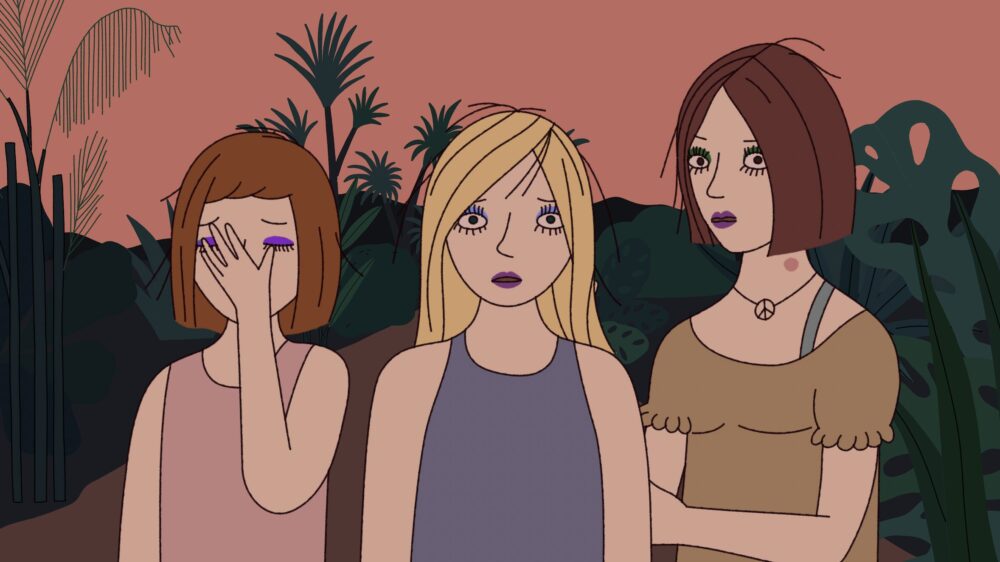
What advice would you give filmmakers who want to incorporate personal stories into their work?
If you’re going to write a story that’s based on something personal, it’s important to look for the universal in your experience. “This is my story, but it could easily be yours.” Change a few things, shift things around … And then also remember, I don’t know who said it, but this idea that all memoir is fiction. You don’t really have to stick completely to the truth. You can make things up along the way.
You can find out more about the short at mediaspace.nfb.ca/epk/maybe-elephants.
Watch the trailer and an excerpt from the short below:




